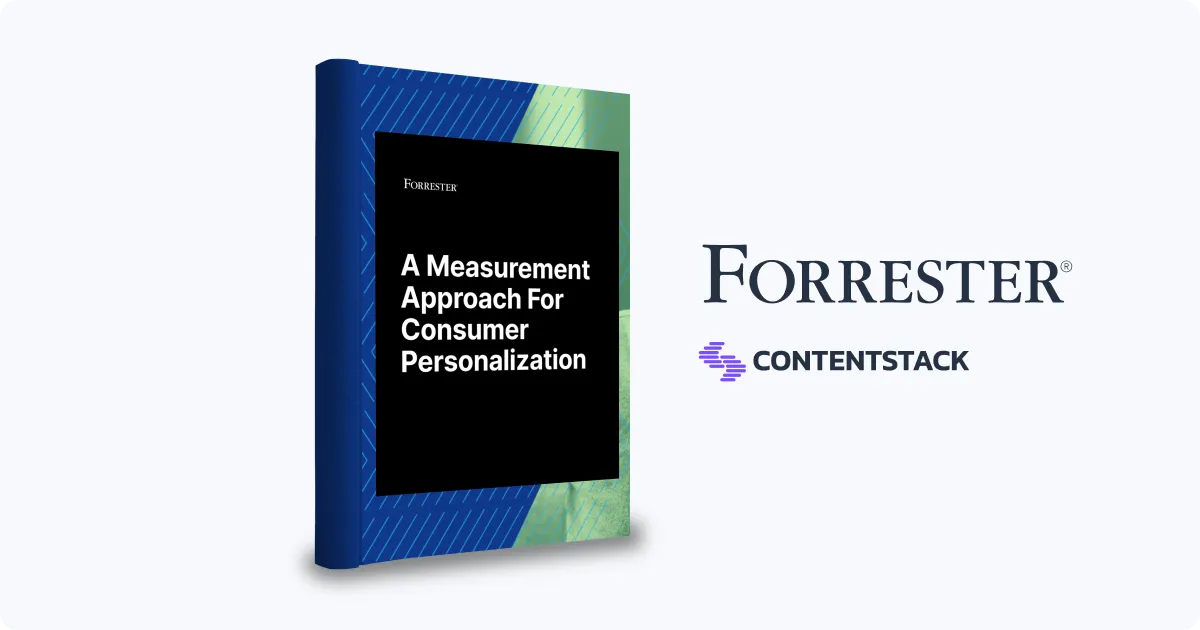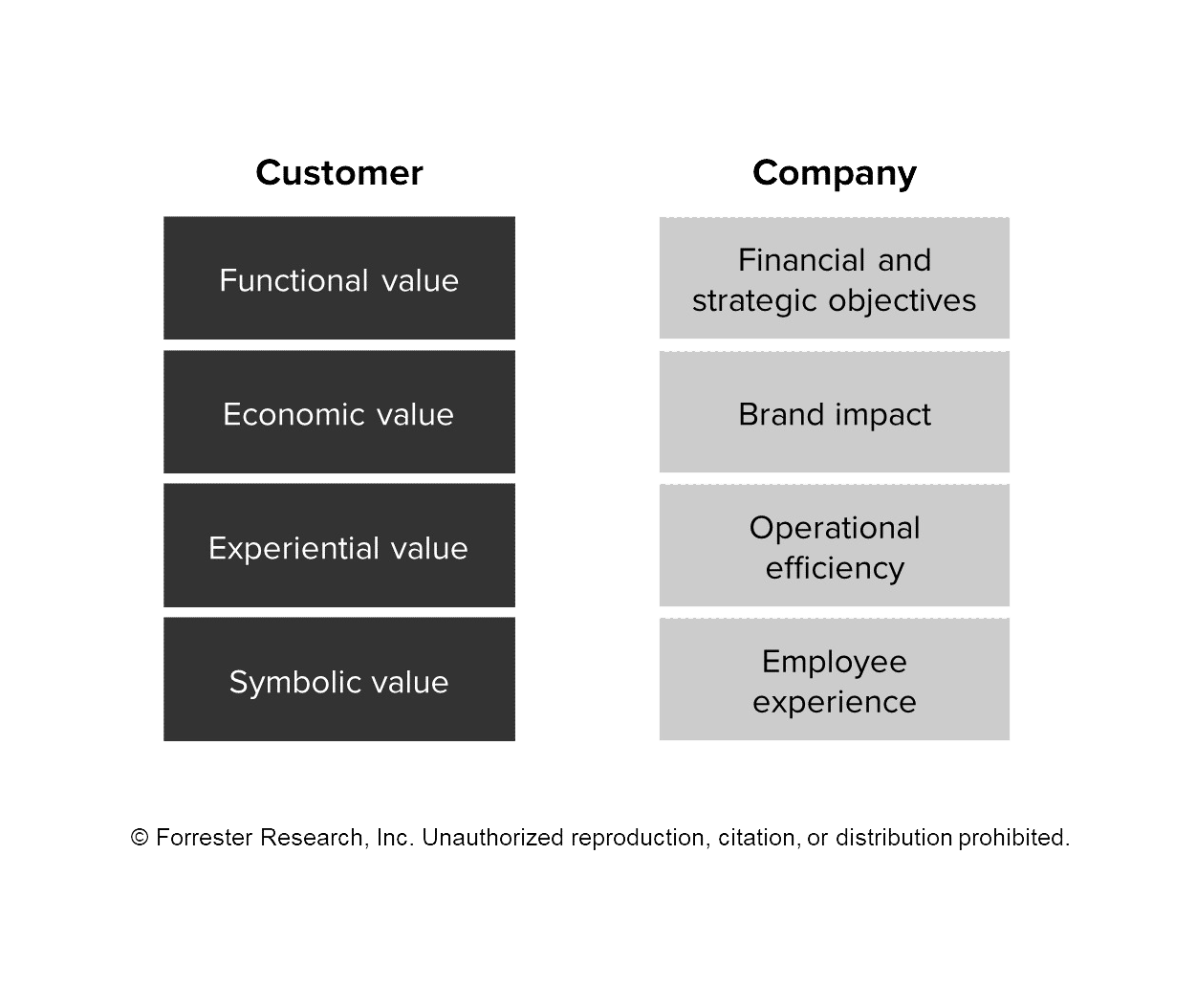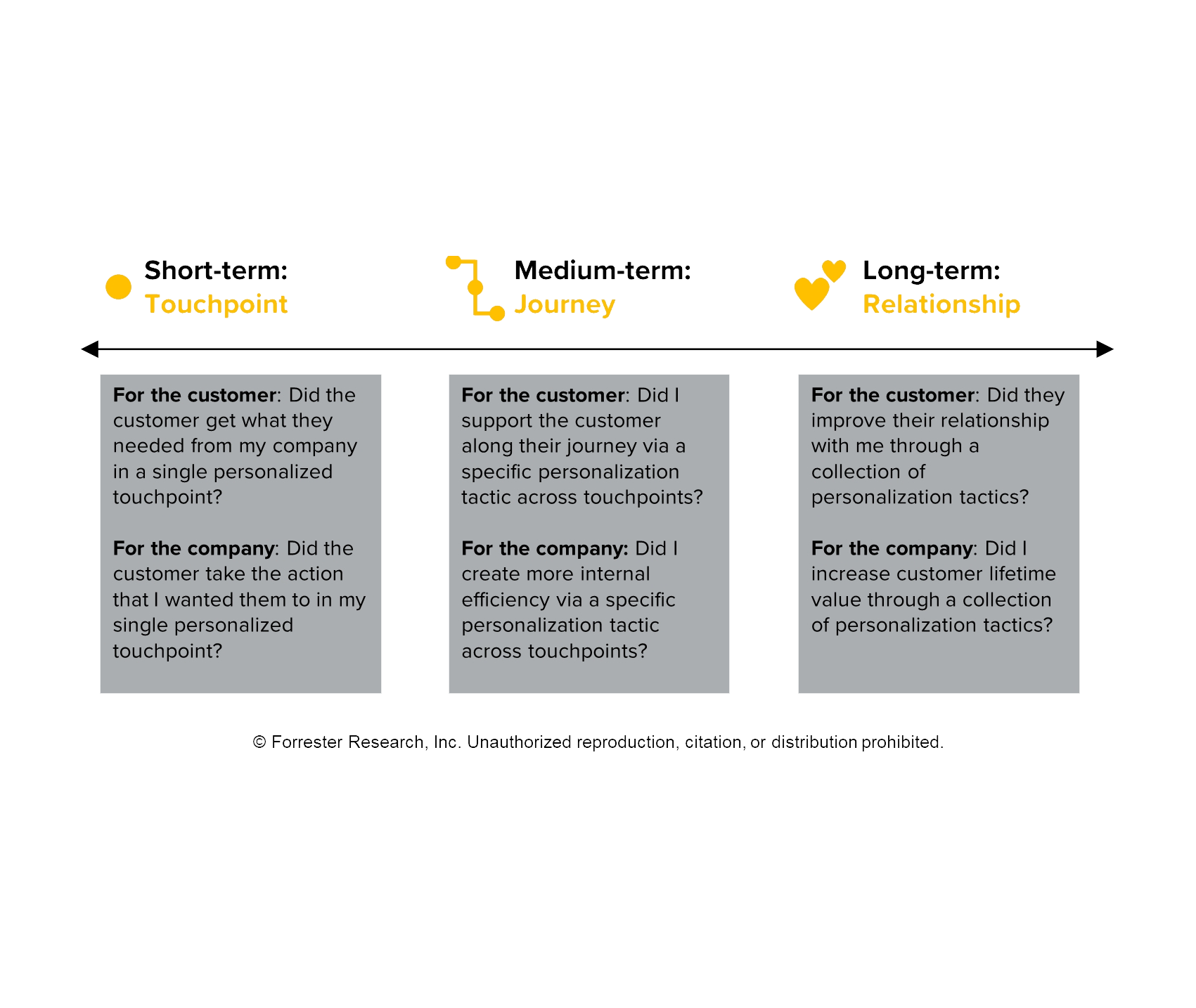
Forrester Business Case Report: A Measurement Approach For Consumer Personalization

Read the Forrester Business Case Report to discover how to:
- Uncover blind spots when tracking personalization. Consumer personalization efforts can be hard to measure since tactics are spread across teams and assessed at a touchpoint level.
- Align customer and company objectives. Customer objectives are not company objectives. Companies must do a better job of balancing what their customers want with internal business objectives.
- Build a holistic measurement plan. Avoid siloes and gaps in tracking. Get simple guidelines that will help stabilize your personalization efforts and provide the clearest insights into performance.
Forrester Business Case Report: A Measurement Approach For Consumer Personalization

About the report
Key findings
Tracking consumer personalization requires a holistic understanding of customers, internal teams and your company goals. The report explores critical insights, including:
- Personalization is difficult to assess: Companies often have trouble tracking customer personalization performance because they measure too myopically.
- Customer vs company: Company objectives anchor on internal improvements, while customers focus on economic, functional, experiential and symbolic benefits.
- Internal teams care about different metrics: Teams track metrics that best support their own goals but aren’t always aligned with customer objectives or company strategy.


About the report
Recommendations
One of the best ways to effectively measure customer personalization is to test and track short-, medium- and long-term metrics together.
- Short-term touchpoint metrics: Touchpoint metrics assess a single touchpoint across a device, platform, or channel. To measure incremental lift at this level, run A/B or multivariate tests against a holdout group. A single test provides a snapshot in time, so build and test different points along the customer journey.
- Medium-term journey metrics: Journey metrics demonstrate customers’ progress along a self-determined journey. Create a learning agenda and test at different points in time or under different conditions, using the last test to inform the next one.
- Long-term relationship metrics: Relationship metrics evaluate the customer’s perception of the brand over years or months after implementing a personalization strategy. Companies use NPS and CSAT to assess customer feelings and collect data via customer feedback management programs.
Companies that have tackled consumer personalization with Forrester’s strategy, data, and technology frameworks need a way to holistically measure performance. Companies struggle to assess the business impact of their consumer personalization programs because tactics are spread across teams and assessed at the touchpoint level. This report helps readers develop a better measurement plan by parsing through customer vs. company objectives, metrics by company function, and a mix of short-, medium-, and long-term KPIs.




.svg?format=pjpg&auto=webp)
.svg?format=pjpg&auto=webp)
.png?format=pjpg&auto=webp)






.png?format=pjpg&auto=webp)

